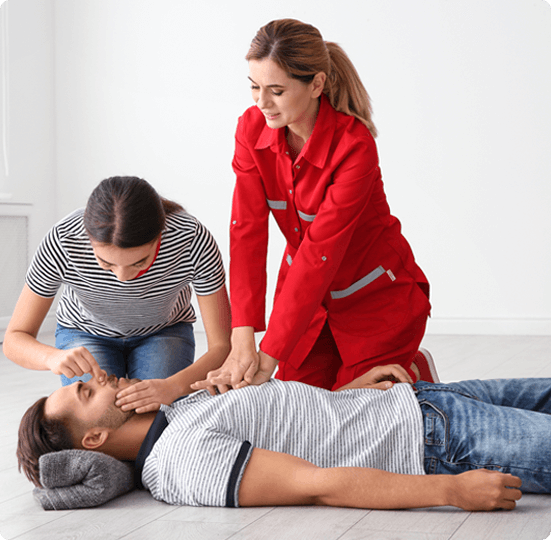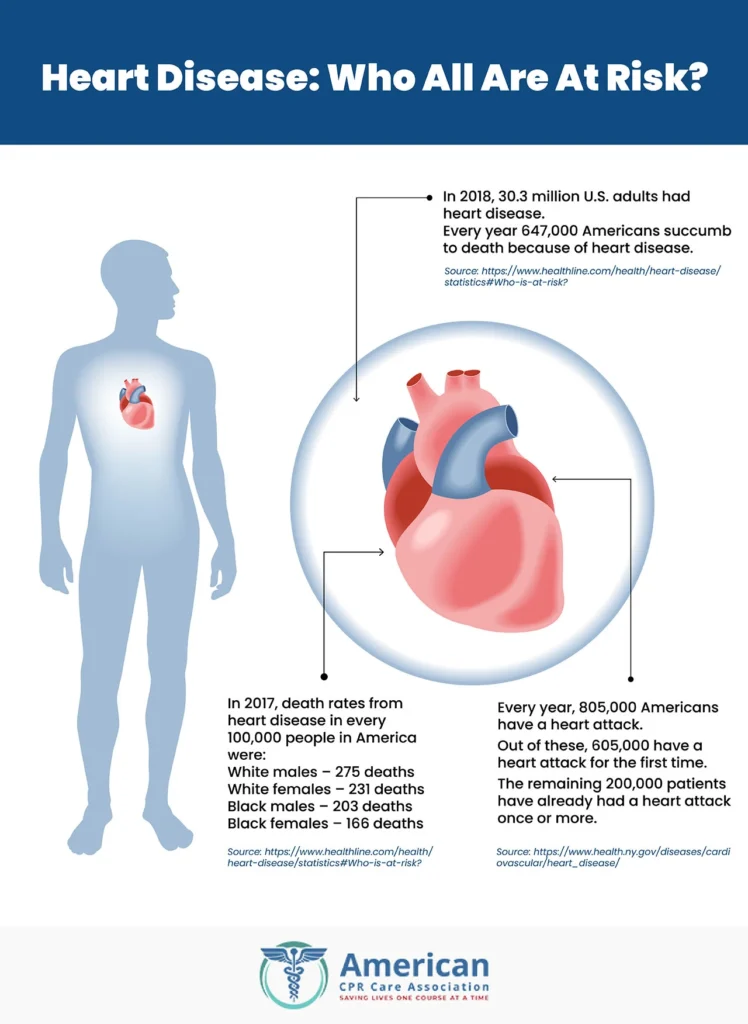
Last Updated On: October 23, 2024
Did you know that every year about 350,000 cardiac arrests happen outside of hospitals and about 70% of these happen at home? Unfortunately, most people who suffer cardiac arrest at home do not get the necessary help from bystanders before medical help arrives. And because of this, 9 out of 10 people who get a cardiac arrest outside the hospital die.
However, increased awareness of recognizing the early warning signs of a sudden cardiac arrest and quick medical response during an emergency can give your loved one the best chance of survival.
Don’t know how to handle a cardiac arrest at home? Worry not!
The American CPR Care Association offers courses on CPR for cardiac arrest for laypersons to prepare them for any life-threatening situation. You may register for our online CPR classes and stay prepared for emergencies.
Before getting into the details, it is crucial to understand the basics.
A cardiac arrest occurs when the heart suddenly stops beating and stops pumping blood around the body to your organs, including the brain.
Cardiac arrest is often confused with a heart attack, but these two have significant differences.
A heart attack occurs when the flow of blood to a part of the heart is suddenly blocked, usually due to a blood clot. A cardiac arrest does not happen due to a blockage. Having said that, a serious heart attack can lead to a sudden cardiac arrest due to a change in the heart’s electrical activity.

When you find someone unresponsive and gasping for breath due to a cardiac arrest, it is understandable to be in panic and become flustered. However, learning how to spot the signs and knowing exactly how to act can double or triple the chances of survival.
Here’s how to spot the early warning signs of cardiac arrest:
Note: A family history of heart problems can also put an individual at an increased risk of cardiac arrest.
First and most importantly, breathe yourself and remember you are the person’s best chance so have the courage to act quickly as every second counts. You only have two to three minutes to save their life or prevent irreparable brain damage.
Here’s what you need to do:
Immediately dial the emergency helpline number 911 and inform them that the person is suffering a cardiac arrest.
Lay the victim flat on their back on a firm and clear surface. Check to ensure that the victim’s airway is open and clear. If not, open their airway by placing one hand on their forehead to tilt their head back and put two fingers under their chin to lift it. This will ensure that the tongue is not blocking the airway. Now, check if the victim is able to breathe properly by watching their chest and nostrils.
If the victim is not able to breathe properly or is only gasping, straightaway start with CPR to keep the brain functioning. To administer chest compressions, place your hands one on top of the other and clasp them together (for small children, only one hand is needed). With a straight elbow, push hard and fast in the center of the victim’s chest. Push down to a depth of two inches at a rate of 100 to 120 pushes a minute for at least thirty compressions. Ensure that their chest rises up to its normal position after each push. Note that, for every 30 chest compression, 2 sets of rescue breaths should be performed. Do this until normal heart rhythm and breathing are established or professional help arrives.
Often people ponder upon this question – how can we survive from cardiac arrest at home when alone?
So here is the answer!
In order to effectively execute CPR for cardiac arrest, it is crucial to have sufficient knowledge and skills about it. American CPR Care Association offers comprehensive online CPR courses that can help you save the life of your loved one by making the right decision and taking prompt action. The study material is easy to understand and offers flexibility to learn at your own pace. Our courses are AHA-compliant. All you got to do is, register yourself on the ACCA website and opt for the CPR certification course.